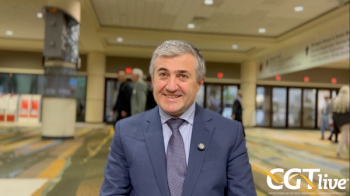
Janice Chen, PhD, on Novel Approaches to Gene Editing
The cofounder and chief technology officer of Mammoth Biosciences discussed the importance of diverse approaches to gene editing to address a variety of indications.
“I think it's very clear that gene editing is here to stay. We now have the first-generation technologies being addressed in clinical trials and patients being cured of diseases. I think the other exciting piece is how quickly the field is evolving to recognize that in order to actually address the broad range of genetic diseases we need all kinds of approaches to be able to fix the underlying root cause of disease. This session and ASGCT more broadly highlights that there's an ongoing pipeline of not just indications that are being treated, but also a pipeline of new technologies that are moving through and maturing rapidly.”
The “classical” approach to gene editing requires a double-strand DNA break and is typically limited to making relatively small edits to the DNA. These drawbacks have generated substantial interest among biotech companies and academic institutions to develop alternative methods of gene editing. A diverse array of approaches are currently being evaluated, some of which may allow for the treatment of diseases that would not be able to be treated effectively with classical gene editing. Several of these approaches were discussed at a session entitled “Advances in genome editing: in vivo small edits and the promise of large insertions” at
Shortly after the session took place, CGTLive® sat down with Janice Chen, PhD, the cofounder and chief technology officer of Mammoth Biosciences, who served as a cochair of the session, to learn more. Chen gave an overview of the 4 talks in the session, which covered topics including integrase-mediated programmable genomic integration, base editing for neurological disorders, DNA polymerase editors, and results from a clinical trial evaluating a multiplex CRISPR/Cas9 system approach for the treatment of latent HIV. Chen emphasized that gene editing approaches have a promising future, but there are still some challenges with these approaches that the field needs to overcome.
REFERENCES
1. Chen J, Cong L, Kakkar R, Arbab M, Sontheimer E, Presti R. Advances in genome editing: in vivo small edits and the promise of large insertions. Session at: ASGCT Annual Meeting 2024, May 7-10; Baltimore, Maryland.
Newsletter
Stay at the forefront of cutting-edge science with CGT—your direct line to expert insights, breakthrough data, and real-time coverage of the latest advancements in cell and gene therapy.

















































